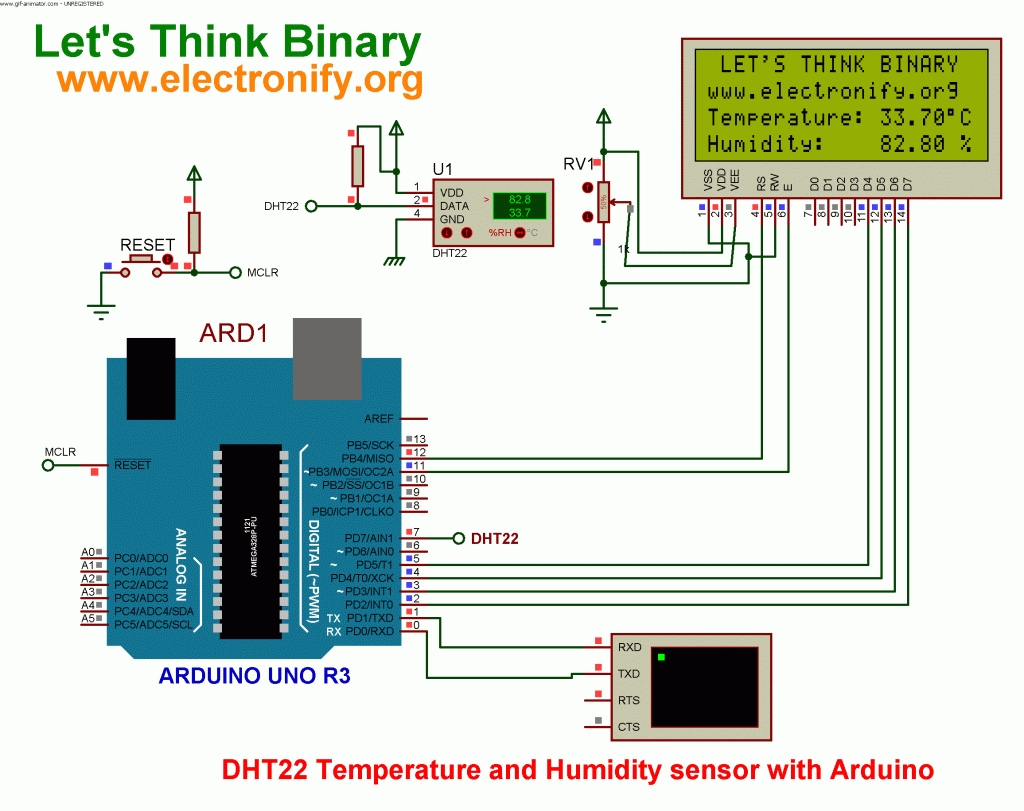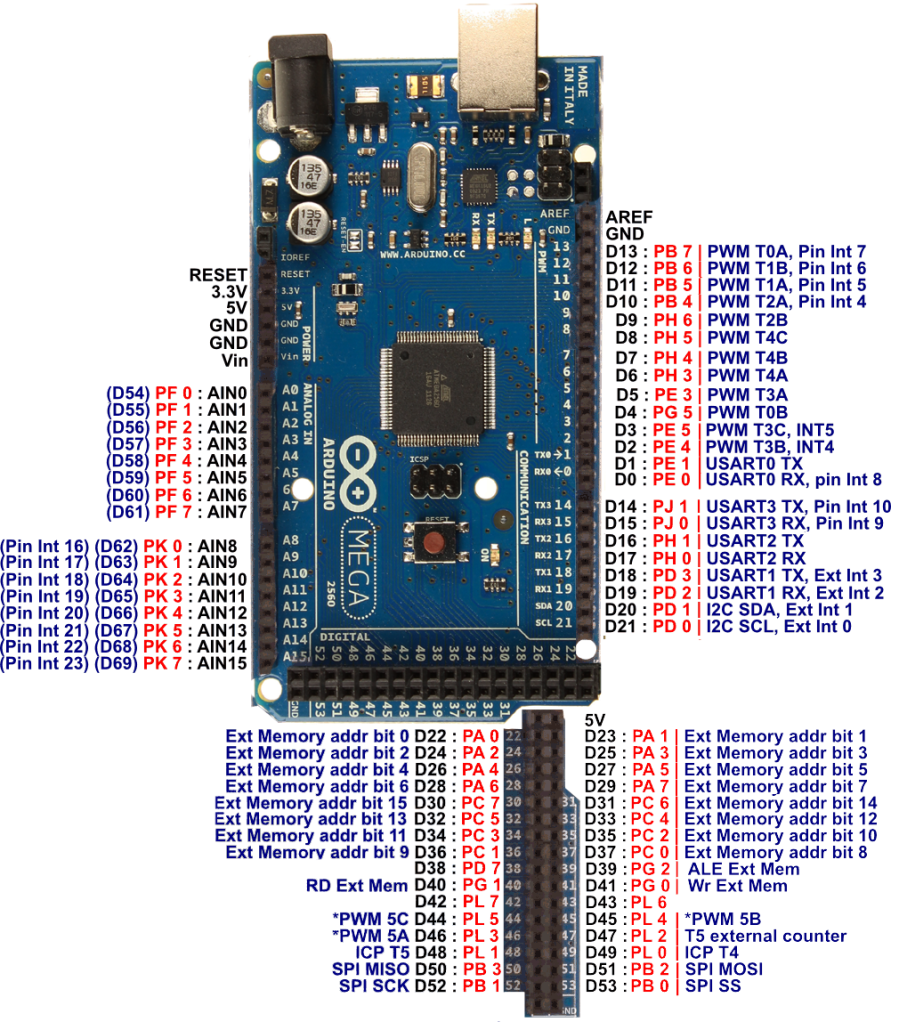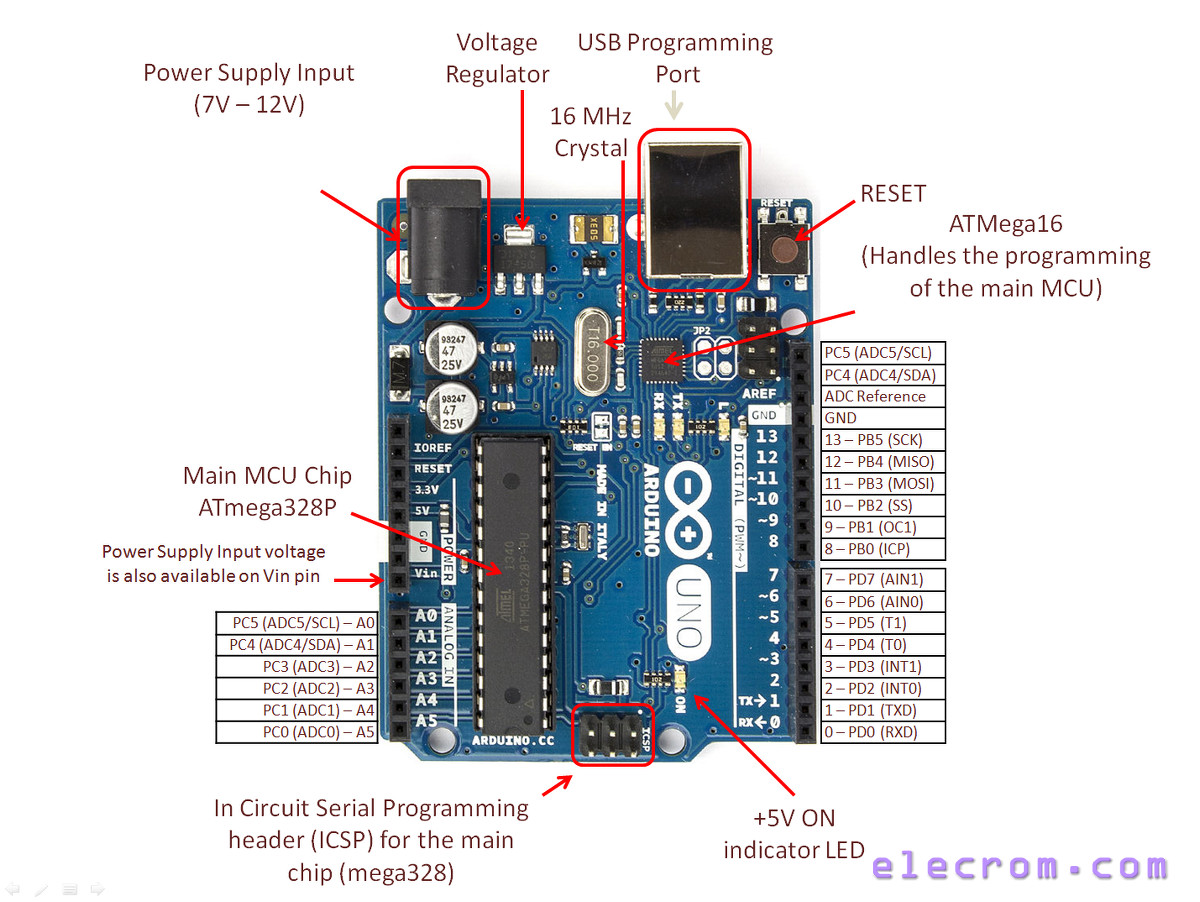

- Elegoo arduino nano pinout how to#
- Elegoo arduino nano pinout manual#
- Elegoo arduino nano pinout code#

Defining Pin Modes pinMode(VCC, OUTPUT) // VCC pinMode(trigPin, OUTPUT) // Sets the trigPin as an Output pinMode(echoPin, INPUT) // Sets the echoPin as an Input pinMode(redLed, OUTPUT) ĭigitalWrite(VCC, HIGH) // +5V - Pin 13 as VCCĭrawHomeScreen() // Draws the Home ScreenĬurrentPage = '0' // Indicates that we are at Home Screen

= Defining Variables extern uint8_t SmallFont # include # include //= Creating Objects UTFT myGLCD (SSD1289, 38, 39, 40, 41) //Parameters should be adjusted to your Display/Schield model URTouch myTouch ( 6, 5, 4, 3, 2) In the setup section we need to initiate the screen and the touch, define the pin modes for the connected sensor, the led and the button, and initially call the drawHomeSreen() custom function, which will draw the home screen of the program. Next we need to define the fonts that are coming with the libraries and also define some variables needed for the program. The parameters of these objects depends on the model of the TFT Screen and Shield and these details can be also found in the documentation of the libraries.
Elegoo arduino nano pinout how to#
You can download these libraries from his website, and also find a lot of demo examples and detailed documentation of how to use them.Īfter we include the libraries we need to create UTFT and URTouch objects. The libraries enable really easy use of the TFT Screens, and they work with many different TFT screens sizes, shields and controllers. Here I would like to say thanks to him for the incredible work he has done. I will use the UTFT and URTouch libraries made by Henning Karlsen. And at the end of this article I will post the complete source code.
Elegoo arduino nano pinout code#
As an Amazon Associate I earn from qualifying purchases.Īs the code is a bit longer and for better understanding I will post the source code of the program in sections with description for each section. Amazon / Banggood / AliExpressĭisclosure: These are affiliate links. Arduino Board …………………………… Amazon / Banggood / AliExpress.TFT Display Mega Shield……………… Amazon / Banggood / AliExpress.You can get these components from any of the sites below: Also I had to make a custom made pin header like this, by soldering pin headers and bend on of them so I could insert them in between the Arduino Board and the TFT Shield. For the first example I have the HC-SR04 ultrasonic sensor, then for the second example an RGB LED with three resistors and a push button for the game example. We need a shield because the TFT Touch screen works at 3.3V and the Arduino Mega outputs are 5 V. Parts needed for this Arduino Touch ScreenĪs an example I am using a 3.2” TFT Touch Screen in a combination with a TFT LCD Arduino Mega Shield. Data transfer is carried out using the SCCB protocol.Now we will go through each of these examples and step by step explain the codes behind them. The camera also performs pre-processing of images, such as exposure control, amplification, white balance, and more.Īlso supported are various image encoding options (YUV, various types of RGB). The maximum image transfer rate (VGA) can reach 30 frames per second.
Elegoo arduino nano pinout manual#
Manual adjustments up to 40x30 are also possible. The camera unit allows you to form images in other formats like CIF (352x240) and others. It can perform some initial processing and transfer the images to microcontrollers, such as the Arduino, via the SCCB interface. This module allows you to capture images in VGA format (640x480). Letâs get started! The OV7670 Camera Module We will be using indrekluuk library in this article and all the credit goes to the developer of this library. This can then be the starting point for using it in future projects. We will connect, configure, and get a test image from the OV7670 using a small program written in the Arduino IDE. OV7670 is the most affordable camera module that can be used with the Arduino, so you can use this in a lot of projects. In this article, I will show you how to display the stream from an OV7670 camera module onto a 1.8-inch TFT LCD screen using Arduino.


 0 kommentar(er)
0 kommentar(er)
